
Levi Olmstead

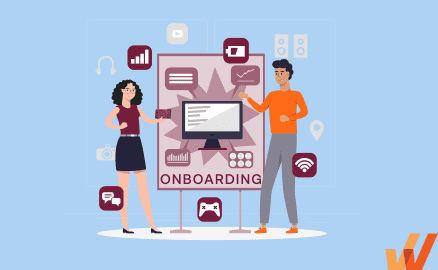
In the ever-evolving SaaS landscape, one thing has remained constant: the critical importance of a well-executed customer onboarding process.
There’s a reason why “SaaS customer onboarding” is such a buzzword – it can make or break the relationship with your users, largely influencing their lifetime value. With the unending influx of new software and services, the digital consumer has never been so discerning. A seamless, user-friendly onboarding experience has become the rule rather than the exception.
However, onboarding is more than just an initial customer touchpoint. It’s the proverbial first impression that shapes the trajectory of your relationship with your users. It’s a significant driver of customer retention, shaping the experience and the narrative that resonates with users. Despite its importance, perfecting SaaS customer onboarding remains an enigmatic challenge for many businesses.
In this article, we’ll explore the important role onboarding plays in user satisfaction and business growth, and uncover the strategies that successful SaaS companies employ to make their onboarding experience stand out in a crowded marketplace. Whether you’re a seasoned SaaS veteran or a startup on the brink of scaling, this guide will provide fresh perspectives on this crucial process.
Customer onboarding is the process of introducing your customers to your product or service and providing guidance on how everything works. A complete onboarding process considers the holistic journey your customers embark on from the moment they sign up for your product or service to when they become regular, contracted customers.
The purpose of customer onboarding is to transition your customers from beginners to habitual users of your product by empowering them to move through it with enough support to accomplish their goals.
To create an exceptional onboarding experience, it’s essential to incorporate various elements both within and beyond your product. This approach helps to keep your customers engaged and motivated to continue using your product.
A great onboarding UX is crucial for increasing a SaaS customer’s lifetime value. When customers understand your value, it can reduce churn and turn first-time customers into loyal users who will stick around for the long term and even purchase your other products or service offerings.
If your customers don’t benefit from your product quickly and achieve digital adoption easily, your chances of retaining them rapidly decrease. SaaS businesses can already expect to lose up to 10% of revenue to churn every year, making a positive onboarding experience even more crucial.
Creating an outstanding customer onboarding experience requires careful planning and extensive data analysis. To avoid developing onboarding processes based on assumptions, it’s crucial to take some preliminary steps before starting the onboarding-building process.
The first step in creating an efficient SaaS onboarding process begins with understanding your customers’ objectives. It’s important to remember that customers aren’t buying your product just because it has fancy features— they’re buying a solution to their problems. Their goals could range from boosting productivity, increasing efficiency, reducing costs, to simply streamlining complex tasks.
By asking the right questions and listening carefully to your customers, you can gain a clear understanding of what they hope to achieve. This might involve surveys, customer interviews, or even analysis of user behavior. The goal is to develop a customer-centric mindset and create an onboarding process tailored to their specific needs and objectives. When customers see that your product is designed to help them achieve their goals, they’re more likely to engage with it, leading to higher user satisfaction and long-term loyalty.
Critical actions, both positive and negative, happen inside your product daily. It’s essential to uncover where your onboarding flow is breaking and where customers are hitting a wall so you can fix those issues. Figuring out where customers are “getting it” provides clues to take advantage of when building your onboarding flows.
Make sure to find your customer’s “aha” moment — the emotional responses customers experience when they genuinely realize your product’s value and believe it’s the right tool for their job. Finding the “aha” moment is crucial because it kickstarts the motivation to continue using your product and sets the tone for the rest of the customer’s journey.
For example, video marketing tool Wistia delivers a lightning-quick initial “aha” moment by taking customers to a page with a “create” button after completing a one-click sign-up form. In just a few minutes, customers can set up a project, upload a video, customize it, and embed or share that video. This helps provide a quick time-to-value for Wistia users.

The right software stack makes it easier to discover relevant critical actions. Heatmaps and session replay tools can locate macro actions, like where a customer stopped reading on a page or which pages have a high bounce or exit rate.
Product analytics tools like Whatfix Analytics can be implemented for more minor actions, like when a customer abandons a step in a checklist. Customer feedback and survey can uncover which features made customers try your product, what part of your product they find most valuable, and how long it took them to understand how to use it.

Journey mapping is another way to better understand your development by visualizing your customers’ actions inside your product. Use a tool like Miro to map out customer touchpoints — start at the sign-up process and finish at the end of your onboarding process, then work from both ends to ensure you don’t miss any steps. Mapping out your customer journey will reveal any gaps in your current onboarding.
Welcoming customers after they sign up isn’t just a best practice — your customers expect it. Setting up a welcome email series forges a clear starting point for a customer’s onboarding journey. It allows you to guide them to specific features, educate, and remind them you exist if they haven’t logged on to your platform in a while.
To create a truly exceptional experience, welcome customers inside and outside your platform. Product tours and welcome messages are a popular way to greet new customers — the overlay is attention-grabbing, and there’s no question where the customer should focus their attention.
For example, here’s a welcome video module for onboarding users to Microsoft 365 from the Whatfix digital adoption platform (DAP).

You can even embed a video of someone in your company welcoming them to create a more personal feel.
Now that you’ve studied your data and understand what your customers need to see the value of your product, it’s time to choose the model you’ll use to drive customers through your user flow. There are several models you can employ:
1. Self-service onboarding: Self-service onboarding takes a hands-off approach to onboarding and works well if your product is straightforward or doesn’t require much time or explanation to get up to speed. With this method, you’ll set up a contextual onboarding flow, like a getting started guide or walkthrough, then let customers handle the rest of the journey independently with a guided, in-app user onboarding checklist.
This onboarding method is common practice for social media networks and many mobile apps — after a few screens of getting started information, users are left to explore the product on their own.
2. Low-touch onboarding: Low-touch onboarding takes self-serve a step further by adding onboarding elements like in-app product tours, checklists, step-by-step interactive onboarding walkthroughs, and getting started tutorials. With low-touch onboarding, customers have some human support options, but no support is dedicated to any single customer. This is a good onboarding model for moderately complex products that require several steps but don’t need to hand-hold customers through each step of the process.
Low-touch onboarding has become the standard for many of today’s most successful SaaS companies. Organizations like Zoom, Shopify, Canva, and Mailchimp have all employed the low-touch model to engage their customers and create loyal fans.
3. High-touch onboarding: High-touch onboarding is a helpful model if your product is complex, takes several steps to initially set up, or understanding your product takes a significant chunk of time. Using this method means you’ll be accommodating your customer’s specific needs through personalized, one-on-one experiences and often involves the creation of customized onboarding collateral.
Allbound’s onboarding process is an excellent example of what high-touch looks like in practice. The complex product partner relationship management software takes a lot of time to learn and set up, so when you sign up, Allbound sets up a series of required training sessions, including a kickoff call where they walk you through what will be discussed in future virtual meetings. They also have an extensive self-serve knowledge base that supplements their training and helps customers better understand specific features.
Even with the most intuitive and user-friendly software, customers are bound to encounter some stumbling blocks along the way. That’s why providing continuous, accessible support throughout the onboarding process is so crucial. It can be the difference between a new user becoming a product evangelist and them becoming frustrated and abandoning your software altogether.
This support can take various forms, each with its strengths. A knowledge base or FAQ section can offer quick answers to common questions. Live chat or chatbots can provide real-time assistance, helping users navigate hurdles as they arise. For more complex issues, direct customer support through email or phone can help customers feel heard and valued. You might also consider creating a user community where customers can exchange tips and best practices.
Modern customer self-service support solutions include embedded help center wikis that overlay directly on your SaaS application, enabling end-users to search for contextual issues they’re experiencing without leaving your product.
Remember, the goal of continuous support isn’t just to solve problems as they arise, but also to prevent them where possible. Proactive support, in the form of regular check-ins or tips for common issues, can help to ensure that small misunderstandings don’t become significant issues. The smoother the onboarding process, the more likely customers are to stick around and make full use of your software.
Testing and improving your onboarding process based on qualitative and quantitative data should be a non-negotiable part of your onboarding creation strategy. Optimizing your onboarding flow is a continuous process, and there will always be improvements to make.
Check your analytics often to see if your churn rate is increasing or decreasing. Talk to customers, send surveys, and regularly speak with users. Develop continuous feedback and ideation loops inside your organization, and set hard dates to reflect on the qualitative and quantitative data, then turn those findings into onboarding improvements.
Create contextual user onboarding flows, drive adoption of new features, and make in-app announcements with Whatfix
Whatfix is a no-code digital adoption platform that enables product managers to create contextual in-app guidance, product-led user onboarding, and self-help user support – all without engineering dependencies. With Whatfix, create branded product tours, user onboarding checklists, interactive walkthroughs, pop-ups, smart tips, and more – all enabling customers and users with contextual guidance at the moment need. With Whatfix, analyze, build, and deliver better user experiences.
Following a few best practices when building the framework for your onboarding flows helps ensure you create an experience that works well from the beginning. Here are some things to keep in mind to help you maximize your onboarding’s effectiveness and drive SaaS user adoption.
Ask only as much information as you need to create a great first experience. If the information you’re asking for has no bearing on the user’s first experience with your product, wait until later to ask the question or gather the information.
When designing your onboarding program, put some energy into thinking about how much information you need from them to get them up and running the first time they use your product. If the only pieces of information you need from a customer to get up and running are a name and email address, make those the only form fields on your sign-up form. You can wait to get more of their personal details, like job title or industry, until after they’ve gone through at least part of your onboarding process.
The faster your product can show users how to solve their problems, the more they’ll want to use it. Baking in quick wins creates momentum and makes your users feel like your product is easy to use.
To front-load value, figure out what a quick win looks like. To determine what your customers consider a win, look at your data and locate where churn rapidly drops off — that’s where your customers are finding their wins. If your product has a single focus, a quick win could be walking them through the process to completion, like creating an email and hitting the send button.
Reducing the time it takes to complete an individual journey by making it easier and simpler has a strong effect on customer satisfaction. Keep your guides and instructions short and to the point, and resist the urge to explain everything your product does in one step, or you’ll confuse customers and delay or quash wins.
One tip is to start your onboarding flow by calling out your product’s core features and explaining how they work. If your product is complex, create an onboarding journey for each product section and keep the instructions brief.
Implementing an in-app guidance tool such as Whatfix simplifies SaaS onboarding experiences by creating step-by-step walkthroughs of your product – as seen in the GIF below.

Testing and improving your onboarding process based on qualitative and quantitative data should be a non-negotiable part of your onboarding creation strategy. Optimizing your onboarding flow is a continuous process, and there will always be improvements to make.
Check your analytics often to see if your churn rate is increasing or decreasing. Talk to customers, send surveys, and regularly speak with users. Develop continuous customer feedback and ideation loops inside your organization, and set hard dates to reflect on the qualitative and quantitative data, then turn those findings into onboarding improvements.
See the example below on how SaaS applications can use Whatfix to gather feedback on different areas of their customer onboarding flow.

Personalization increases engagement, and engaged customers will spend more time inside your product. Your customers won’t use your product the same way, so offer different paths and ask your customers what they need so you can direct them to a walkthrough or tutorial that hones in on their immediate needs.
You can implement personalization by letting customers pick different paths on your welcome screen, or you can create a few forks in your onboarding flow, then ask for a small amount of information during sign-up to put customers on a semi-custom path.
The meditation app, Calm, does this by asking questions about the user’s state of mind during the sign-up process — once they’ve signed up, they serve up meditations based on the answers to the user’s questions.

With a digital adoption platform like Whatfix, customer success and implementation teams can build custom, personalized onboarding flows for each client.

Building your onboarding requires more than hard work and dedication. It requires customer onboarding software, too. Tools like Whatfix allow you to continuously build and test your onboarding flows to improve your onboarding experience.
Whatfix lets you create step-by-step walkthroughs, tooltips, videos, and PDFs to help new users better understand the different features of your app. It also allows you to add self-help widgets inside your app, so users can access training content as needed and learn in the flow of work.
With Whatfix Analytics, you can capture, track, and measure key user onboarding KPIs to build a data-driven onboarding strategy.

SaaS customer onboarding automation is all about simplifying the onboarding process by generating automated messages or launching contextual in-app help.
Look at your customer onboarding processes to understand what can be automated. Simplifying signup is a great way to boost customer satisfaction. You may also explore optimizing your welcome page with automated welcome messages or surveys.
As the SaaS market evolves, so too must your product and your onboarding materials. Regularly revisiting and updating your onboarding content ensures that it stays relevant and effective. New features, changes to the user interface, or updates in your product offerings must be reflected in the onboarding experience. Ignoring these updates may lead to a confusing mismatch between what the user is taught during onboarding and what they actually encounter when using the product.
Furthermore, regularly updating your onboarding materials also allows you to refine your strategies. You can leverage user feedback and analytics data to continuously improve and adapt your onboarding process, enhancing its effectiveness over time. It’s not a one-time effort, but rather an ongoing commitment to excellence and customer satisfaction.
Celebrating user achievements can serve as powerful motivators and confidence boosters for customers. It shows that you recognize and value their efforts in learning how to use your product. This could be as simple as sending congratulatory emails when users complete the onboarding process, reach certain usage milestones, or unlock advanced features.
Such celebrations not only reinforce positive behavior, but also create a more engaging, gamified experience. This approach makes the learning process more enjoyable and the relationship with the user more personal. It also encourages further interaction with your software, increasing the likelihood of long-term engagement and loyalty.

Leveraging analytics is key to understanding and improving your onboarding process. By tracking how users interact with your platform during onboarding, you can gain insights into what’s working and what’s not. For instance, if analytics show that users often drop off at a certain step, that could signal a point of confusion that needs to be clarified.
User behavior data can also reveal which features are most used, which are ignored, and how quickly users are progressing through the onboarding process. These insights allow you to tailor your onboarding experience to user needs, making it more intuitive and effective. Remember, analytics should not just be about collecting data but about using that data to make informed decisions that enhance user experience.
The end of the onboarding process is just the beginning of a customer’s journey with your product. Following up after onboarding is crucial to maintaining engagement and ensuring users continue to find value in your software. This could involve sending emails with additional resources, offering tips and best practices, or providing guidance on more advanced features.
Follow-ups are about more than just offering additional information. They’re an opportunity to check in with users, understand their experience, and gather feedback. This can help you identify any potential issues or concerns before they escalate, while also demonstrating to users that you’re invested in their success. Providing continued support post-onboarding can be a significant factor in reducing churn and fostering long-term customer relationships.
There’s no one-size-fits-all guide to SaaS customer onboarding, but these examples offer insights you can borrow to build your own onboarding experience.
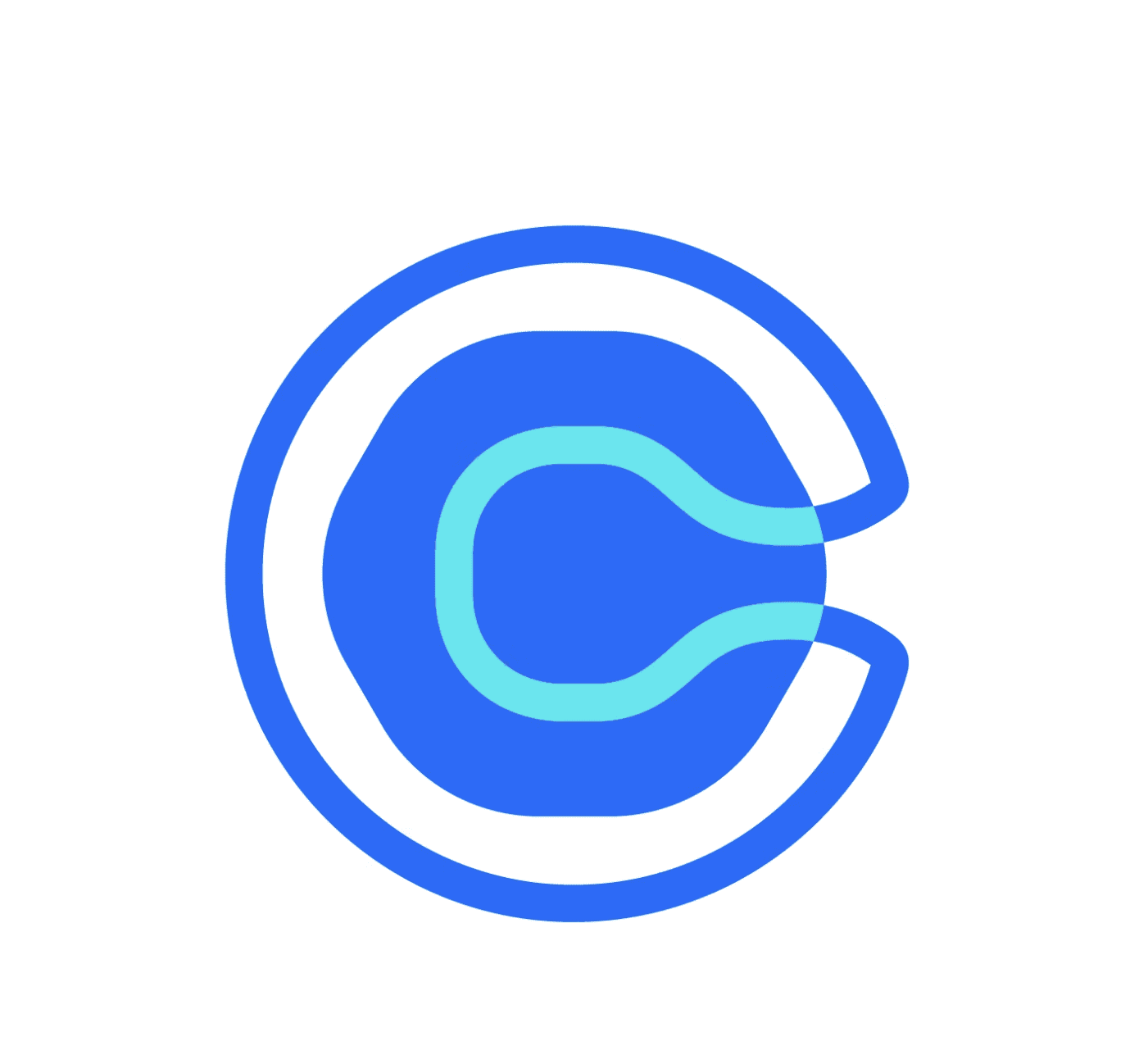
The online appointment scheduling tool Calendly nails the keep-it-simple principle by collecting just enough information for a user to get started. On their homepage, a user enters only their email address, then an email address, name, and password on the next page. Once that information is submitted and the user confirms their email address, they are taken to a page where they can set up their custom calendar.

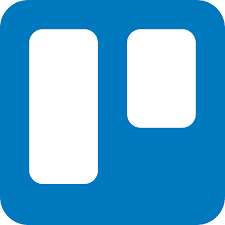
The task management and collaboration tool Trello gets customers to their goals faster by displaying a simple but thorough checklist once their sign-up process is completed. The customer sets up a workspace as part of the sign-up process, so the first task is already crossed off in their checklist when they arrive on the first screen. This creates a quick win for the user and guides them through the setup process, increasing their chances of staying on the platform longer.

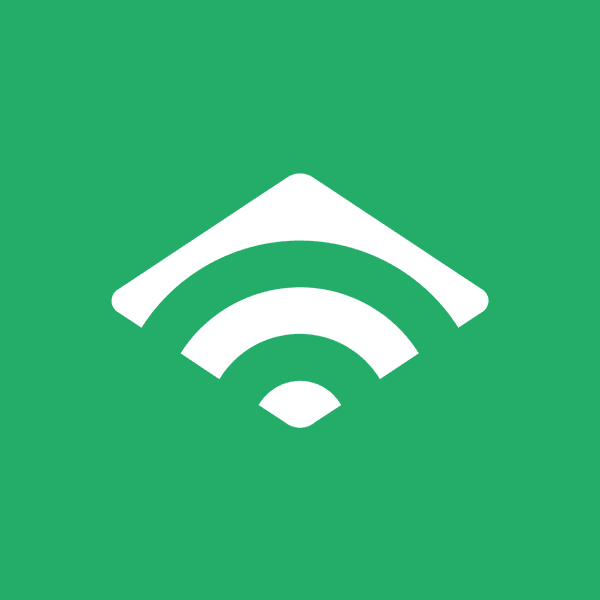
The marketing automation platform Klaviyo asks for several pieces of information from customers during the sign-up process. They reduce friction and simplify the process by breaking the tasks into three steps. Once the customer has completed the third and final step, they are directed to a dashboard where they’re greeted by a list of topics that direct customers to help center articles.


Whatfix drives customer onboarding and adoption with personalized guidance and embedded learn-by-doing techniques. Initiate the perfect handshake with a customized employee onboarding experience. Welcome new users with the first call-to-action based on their role. Provide an option to new users to discover the application with a guided tour

Whatfix’s Task List feature allows you to create a list of to-do tasks for customers to help them kickstart their onboarding process. The Task List engages and reminds users to complete the tasks at hand by enabling them to self-track their progress against their assigned tasks.

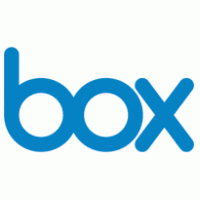
Hit the ground running with enterprise workflow automation using Box. Start with pre-built departmental workflow templates and custom-configured templates, or create workflows with the intuitive no-code builder. Box has a reasonably simple home page layout with a prominent CTA, enabling new users to get up and running as soon as possible. Clicking the CTA takes users to the pricing page, where they can see a breakdown of each price plan. This means users can immediately choose the most appropriate plan for them.


HubSpot onboards and retains users by personalizing the onboarding experience based on user survey responses. The SaaS tool sends new users a getting-to-know-you Q&A session with no more than four multiple-choice questions.

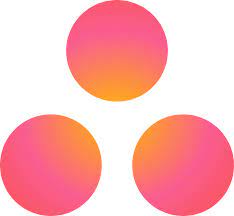
Asana is a popular project management software, but it can be challenging to navigate, like most SaaS products in this category. Fortunately, Asana provides a self-serve guide to assist users with any questions they may have.
The Asana Guide is a comprehensive content hub that contains best practices and educational resources to help teams become proficient with the Asana product. It’s fully searchable and serves as a centralized resource for teams to learn about Asana and improve their onboarding experience.
Asana has a Search page specifically designed to help users quickly find the appropriate resources based on their level of experience with the app, whether they are just starting out or assisting their team with learning Asana. This feature provides relevant contextual help outside of the app.

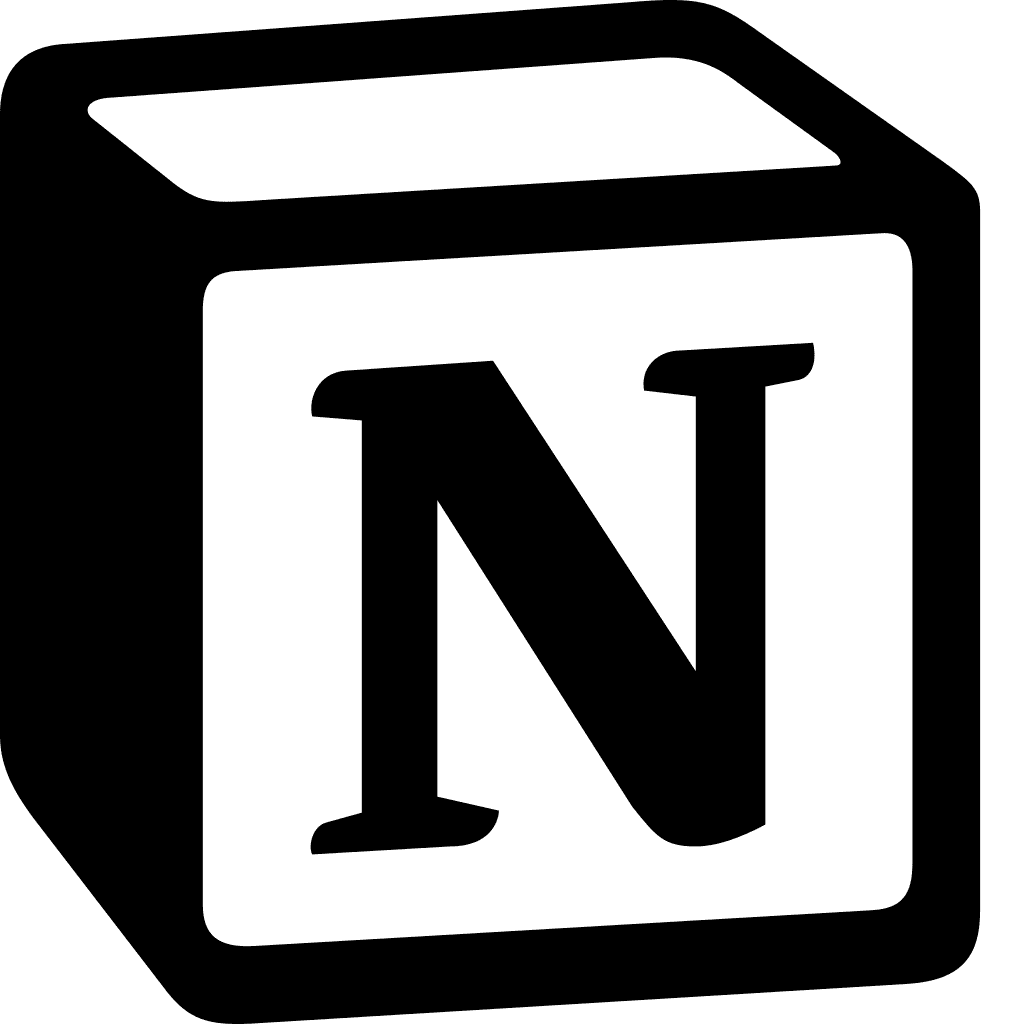
Notion is a tool for collaborating and increasing productivity, allowing you and your team to write, plan, and organize your work. To help users get started, Notion offers a guided tour with tasks on the “Getting Started” page. This approach aims to teach users the essential functions needed to start collaborating and creating on the platform as quickly as possible.
As part of the onboarding process, users have the option to select templates that assist in creating Notion pages, such as budgets and meeting agendas. These templates promote teamwork and the development of customized content and systems that align with the team’s objectives and business requirements.


Tooltips are incredibly useful and flexible tools that can help guide users through your UI while also providing a space for education and instruction. They can be used to draw attention to specific areas of your design, and are so effective that Webflow relies on them heavily in their onboarding process.
Webflow’s onboarding is divided into three parts, each of which focuses on different aspects of website creation. The tooltips contain information about what users will learn and how long it will take. They also provide an option to skip the onboarding process for advanced users who wish to get started right away. Within each section, the tooltips guide users through basic website building tasks.
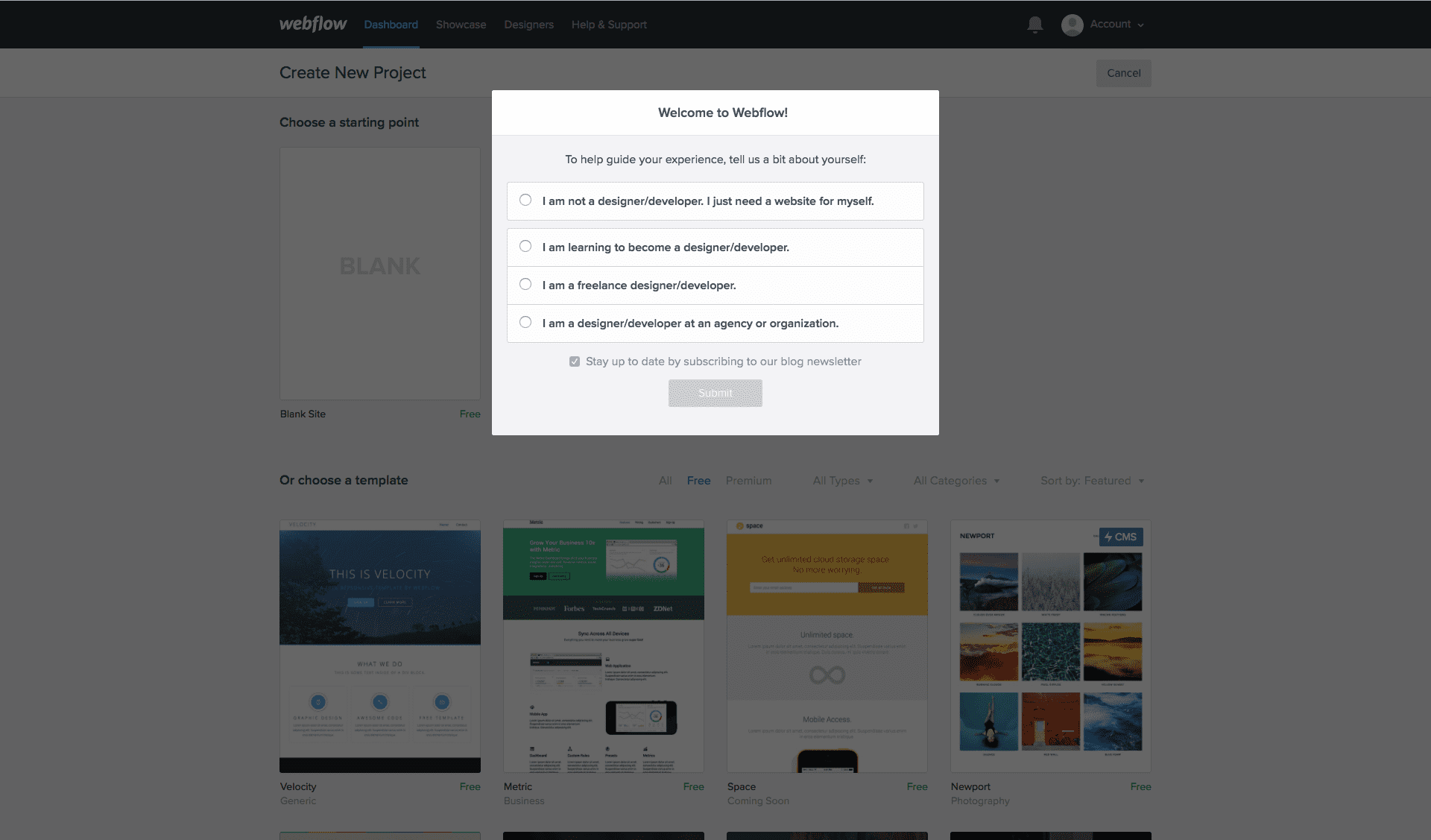
To help you navigate the settings, the tooltip provides clear instructions and guidance on what to do. As you progress through each task, a new tooltip appears to guide you on the next step, allowing you to build your website with ease. By the end of the three sections, you’ll have gained experience in adding buttons, resizing containers, and other valuable skills.
If you’ve followed the steps and practices above, you now have all the ingredients for creating an onboarding journey that will knock your user’s socks off. Now it’s time to take your findings and data and execute your onboarding flow.
To create the most effective onboarding journey, think through your entire onboarding flow before you start building. Here’s a checklist that takes you through building a comprehensive customer onboarding flow to turn first-time customers into loyal adopters.
✓ Thank you, the checklist will be sent to your email
Welcoming your customer should happen both inside and outside of your product. Build in several ways to tell your customers you’re thrilled they chose your product.

A first-run onboarding flow should be designed for new customers to give them their first quick win. When designing this onboarding flow, think about what your customers need to learn first to get their initial aha moment.
Not all onboarding elements will live inside your product. The following elements can be placed on your main website or a subdomain to create spaces where customers can educate themselves about your product at their convenience.
With Whatfix, build a self-help knowledge base directly in your application – as seen below:

No matter how comprehensive your onboarding is, your customers are going to run into trouble. Set up at least one of these channels if you work with a low or high-touch model.
Onboarding is a journey for everyone involved, and building a customer onboarding flow is not a one-and-done project. It’s an ongoing process that needs constant attention and care, so if you plan to grow your company and increase your customer base (spoiler alert: you do), you’ll need to upgrade and evolve your onboarding flows constantly. Even your loyal customers may not know how to use certain features that could solve some of their other problems or make their experience more delightful.
Once you’ve nailed your new customer onboarding journey, take what you’ve learned and apply the same principles when creating onboarding flows for new releases and more advanced users who’ve graduated from your initial onboarding flows.
Whatfix engages SaaS customer onboarding by helping you design interactive product tours, onboarding task lists, and contextual guidance. Whatfix ensures that users develop a high application proficiency within a short time. Whatfix’s user-level segmentation helps you create personalized user onboarding experiences which lead to a higher level of engagement.
Request a demo with Whatfix and learn how to accelerate your SaaS customer onboarding experience today.

Thank you for subscribing!